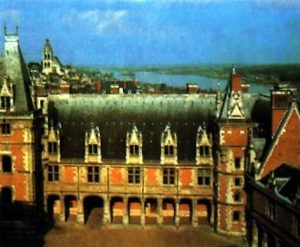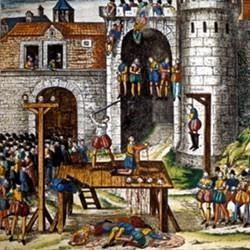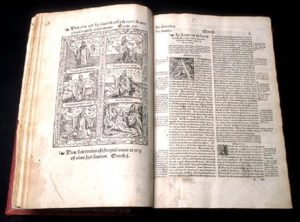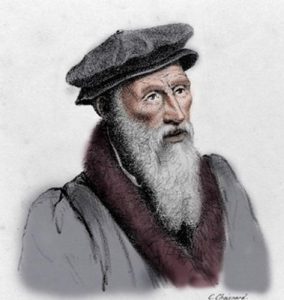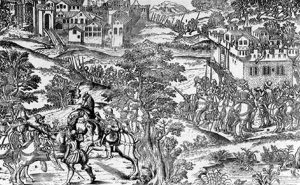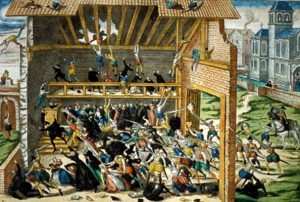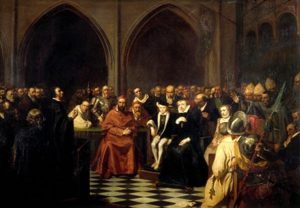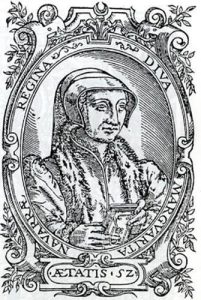An unfortunate initiative
One night in October 1534, some posters criticizing mass were distributed or posted up on walls in Paris, and, in the provinces, in Orléans and Amboise, where the king held court, and even in front of king François Ier‘s own bedchamber in Blois. These posters were written in violent terms – they likened the ritual of mass to witchcraft and accused the pope, the bishops, priests and monks of lying and of blasphemy.
These posters came from Neuchâtel, where a pastor, Antoine Marcourt, had had them printed. He was a member of a group of French people gathered round Guillaume Farel who had all taken refuge in Switzerland.
The king and the Catholic Church reacted violently
Up until then, Protestants had been persecuted by parliament and sometimes sentenced to death as heretics, but the king himself had maintained a fairly tolerant attitude towards them. He dreamed of establishing a united Christianity – something which Charles Quint had never managed to achieve : indeed, he had sent an ambassador to speak with the main reformers in Germany and Switzerland.
But for the king this incident meant that his efforts at conciliation had failed. But he likewise thought that a plot had been organised against him, threatening his authority. The posters incident considerably shocked public opinion. The king decided to protect his kingdom against « heresy » and adopted a policy of repression. Many suspected of sympathizing with the protestant cause were harassed, imprisoned, taken to court or even sentenced to death in Paris and throughout the provinces. Many Protestants and their followers fled.
In January 1535 the Catholic Church organized an expiatory procession through the streets ; it was announced in every parish and even the king took part in it. On that day six « heretics » were burned at the stake.
The titles of the posters :
Truthful articles about the horrible, unbearable and wide-spread abuses of the papal mass, which is in direct opposition to the Lord’s Supper, presided over by our Lord, the only mediator and saviour, Jesus Christ.

